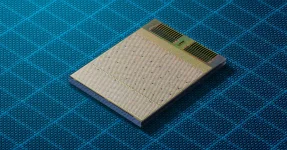Ayar Labs created the first optical chiplet that connects using Universal Chiplet Interconnect Express. This new chiplet makes AI computers run faster and use less power. It cuts down delays and saves energy compared to older connection types. The chiplet plugs right into customer designs, thanks to its electrical interface.
The chiplet moves data at 8 trillion bits per second using Ayar Labs' SuperNova light source with 16 different light waves. Because it follows UCIe standards, companies can mix parts from different makers in the same system. This makes advanced light-based connections cheaper and easier to use. The technology helps AI systems work better than they can with regular copper wires.
Mark Wade is the CEO of Ayar Labs. He says AI systems need light connections to handle power problems when they grow larger. His company saw this need early and worked on putting light connections close to computer chips. Ayar Labs mixes light-based chips with regular computer chip making, allowing light connections to fit inside packages with many chips.
These connections help computer parts talk to each other across tiny spaces or long distances. Graphics chips can work together as if they were one giant chip. Ayar Labs plans to show these products at booth #2958 during the Optical Fiber Communication Conference. The event will happen in San Francisco from March 30 to April 3, 2025.
You can also see Ayar Labs tech at the Jabil booth #5845 during the same event. They will display a model with 64 SuperNova light sources that can move up to one petabit of data each second in both directions. The design packs more computing power into each rack. It also cools better and lets you replace parts without shutting down the server.
Many big tech companies support this work. AMD, which leads in chiplet technology, backs the UCIe standard because it helps networking grow to meet AI needs. ASE praises Ayar Labs for adding to co-packaged optics progress. Alphawave Semi calls this the first case where parts from different makers and factories can work together for light connections.
D-Matrix builds AI chips using layered technology. They say light connections help solve network problems when scaling out their systems. GlobalFoundries points out that UCIe has become the main standard for chip-to-chip talk. TSMC believes these optical chiplets will change how we fix data bottlenecks in large AI systems.
The UCIe group chair, Dr. Debendra Das Sharma, says the standard helps create better AI systems through chiplets that work together. By letting different companies' products connect, UCIe meets the need for more data speed and energy savings. He feels encouraged seeing Ayar Labs bring their optical chiplet to market.
The chiplet moves data at 8 trillion bits per second using Ayar Labs' SuperNova light source with 16 different light waves. Because it follows UCIe standards, companies can mix parts from different makers in the same system. This makes advanced light-based connections cheaper and easier to use. The technology helps AI systems work better than they can with regular copper wires.
Mark Wade is the CEO of Ayar Labs. He says AI systems need light connections to handle power problems when they grow larger. His company saw this need early and worked on putting light connections close to computer chips. Ayar Labs mixes light-based chips with regular computer chip making, allowing light connections to fit inside packages with many chips.
These connections help computer parts talk to each other across tiny spaces or long distances. Graphics chips can work together as if they were one giant chip. Ayar Labs plans to show these products at booth #2958 during the Optical Fiber Communication Conference. The event will happen in San Francisco from March 30 to April 3, 2025.
You can also see Ayar Labs tech at the Jabil booth #5845 during the same event. They will display a model with 64 SuperNova light sources that can move up to one petabit of data each second in both directions. The design packs more computing power into each rack. It also cools better and lets you replace parts without shutting down the server.
Many big tech companies support this work. AMD, which leads in chiplet technology, backs the UCIe standard because it helps networking grow to meet AI needs. ASE praises Ayar Labs for adding to co-packaged optics progress. Alphawave Semi calls this the first case where parts from different makers and factories can work together for light connections.
D-Matrix builds AI chips using layered technology. They say light connections help solve network problems when scaling out their systems. GlobalFoundries points out that UCIe has become the main standard for chip-to-chip talk. TSMC believes these optical chiplets will change how we fix data bottlenecks in large AI systems.
The UCIe group chair, Dr. Debendra Das Sharma, says the standard helps create better AI systems through chiplets that work together. By letting different companies' products connect, UCIe meets the need for more data speed and energy savings. He feels encouraged seeing Ayar Labs bring their optical chiplet to market.












